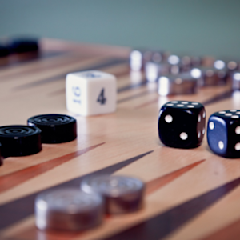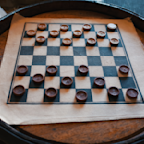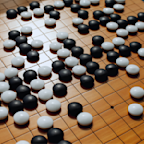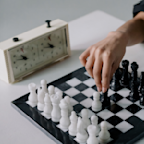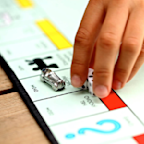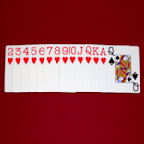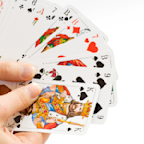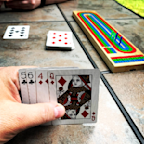Search results
Find a wide range of backgammon sets, boards, tables, software, and accessories from top brands at GammonVillage. Compare sizes, materials, designs, prices, and reviews to choose the best set for your needs.
- Gammon Village
- $49.95 - $5,995
- 15
- Overview
- Setup
- Objective
- Moving Checkers
- Hitting
- Bearing Off
- Doubling
Have you always wanted to try backgammon but weren’t sure how to set it up and get started? This classic 2-player game is beyond fun to
when you have some spare time, and it’s really simple to learn. Whether you’ve never tried the game before or you just need a reminder of the rules, we’ve got everything you’ll need to know. Once you finish reading, you’ll know exactly how to set up a game of backgammon and
Place checkers of your color on triangular points on the board. Put 5 on your 6th point, 3 on your 8th point, 5 on your 13th point, and 2 on your 24th point.
Roll 2 dice and move your checkers that number of spaces. You can move 1 checker the total number of spaces or split the movement between 2 checkers.
Move all your checkers to your home board to start removing pieces. Take checkers off of the spaces that match the numbers on your dice roll.
Win the game by removing all of your checkers from the board before the other player.
Give each player a set of 15 checkers and a pair of dice.
Separate the checkers by their color and give a full set to each of the players. Then hand each person 2 6-sided dice to roll during the game.
You can share the same pair of dice if you don’t have enough for both players.
has a doubling cube with numbers on it, you can set it aside for now. You don’t need to play with it if you’re just learning the game.
Set the backgammon board in between the players.
Sit across from the person you’re playing with and position the board so the narrow triangles (known as “points”) are in front of you. The backgammon board has 2 halves separated by the bar in the middle. Each half has 2 quadrants with 6 points. The 2 quadrants on one half of the board are the players’ “home boards,” and the quadrants on the other half are the players’ “outer boards.”
Remove all 15 checkers from your home board to win the game.
Every turn, you’ll roll dice and move your checkers around the points so they get closer and closer to your home board.
Once you have all of your checkers on your home side of the board, you can start removing them (or “bearing them off”) from the board instead of moving them. As soon as you take your last checker off the board, you win!
While you’re trying to move your checkers closer to your home board, remember the other player is doing the same. Even though the game is a race to finish, there’s a lot of strategy for positioning and blocking your opponent’s moves.
Have each player roll 1 die to determine who moves first.
Take one of your dice and roll them near the board. Whoever rolled the higher number gets to start the game using the numbers that were just rolled. After the first turn, each player rolls their own pair of dice.
If you both rolled the same number, roll the dice again until one of you has a higher number.
for rolling the dice, but rolling them inside of the board or on the table works fine too.
Move your checkers a number of points equal to your dice roll.
You can either move 1 checker the total number of spaces from your roll, or you can split the movement between 2 checkers. Choose which checkers you’re using, and move them the number of points down the board. As long as the point you land on doesn’t have 2 or more enemy pieces, then it’s a legal move. Once you finish moving, it’s the other player’s turn.
Land on a space with 1 opposing checker to hit it off the board.
Whenever you have an opportunity to land on a point with a single one of your opponent’s checkers (no more no less!), do it to slow down their progress. Take their checker off the board and set it on the bar in the middle.
Place hit checkers back on the board instead of moving on your turn.
If you have any checkers on the bar, you’re not allowed to move any of your pieces until you move the hit pieces back onto the board. Roll the dice on your turn. If the numbers on the dice correspond to any open points on your opponent’s home board, you can move a checker there from the bar. If none of the numbers match or if the points are blocked, then you lose your turn.
Start bearing off your checkers when they’re all on your home board.
If you still have other checkers on your opponent’s side or on your outer board, continue taking turns like normal to move them. As soon as you move your last checker onto your home board, you can immediately start bearing them off the board to try and win.
Roll dice and remove pieces from the points on your home board.
Roll your dice just like you would on your other turns. If there are any checkers on the point that matches one of the dice, then you can take it off the board permanently.
If there isn’t a checker on the point from your die roll but there are checkers higher than it, you must move those checkers instead. For example, if you roll a 4 but still have a checker on the 5th point, you would have to move that checker to your 1st point.
If the point you rolled doesn’t have a checker and there aren’t any higher checkers, then you can bear off a piece from the next highest point. So if you roll a 4, you could instead take a checker off of the 3rd point.
Use the doubling cube if you’re playing multiple matches or betting.
When you’re playing competitive back-to-back matches or wagering money, you can increase the value of the game with the doubling cube. The cube has sides with 2, 4, 8, 16, 32, and 64, so you can continue doubling the stakes if you feel confident you’re going to win. Since you don’t really need the cube for a standard game, it’s okay if you don’t play with it your first few times.
Double the stakes on your turn if you think you have an advantage.
Start with the doubling cube in between the players to the side of the board. If you feel like you’re doing well based on your board positioning, use the cube on your turn before you roll the dice. Turn the cube to the side with the “2” and offer it to the other player.
Any player can choose to double the stakes for the first time in the game.
You may want to double the stakes if you have a lot of your pieces in your home board and your opponent still has a lot of checkers on the outer boards.
1-24 of 355 results. Results. Amazon's Choice. Top Backgammon Set - Classic Board Game Case - 2 Players - Best Strategy & Tip Guide - Available in Small, Medium and Large Sizes (Brown, Medium) 12,342. 600+ bought in past month. $3999. List: $43.85. FREE delivery Sat, May 4. Or fastest delivery Thu, May 2. Small Business. More Buying Choices.
Apr 12, 2024 · Backgammon is a 2-player board game that is played on a backgammon board, which is a board divided in the middle with 12 triangular spaces, called points, in each quadrant. Each player sits on opposite sides of the board and has 15 color-coded checker pieces to play with.
- 1.3M
People also ask
How do you play backgammon?
What kind of board do backgammon players use?
Where can I buy a used backgammon board?
How many points does a backgammon board have?
Aug 9, 2019 · Learn about the features and benefits of various backgammon sets, from corkboard to wood, from travel size to attaché, from budget to luxury. Find out what experts and players recommend for different preferences and occasions.
- Hilary Reid
- Senior Editor, The Strategist
Find a wide selection of backgammon boards for adults and kids, with different sizes, colors, materials and features. Compare prices, ratings, reviews and delivery options for over 500 products on Amazon.com.
Jul 4, 2021 · Learn about the different types, sizes, materials and styles of backgammon boards and checkers. Find out what to consider for your use case, budget and preferences.
